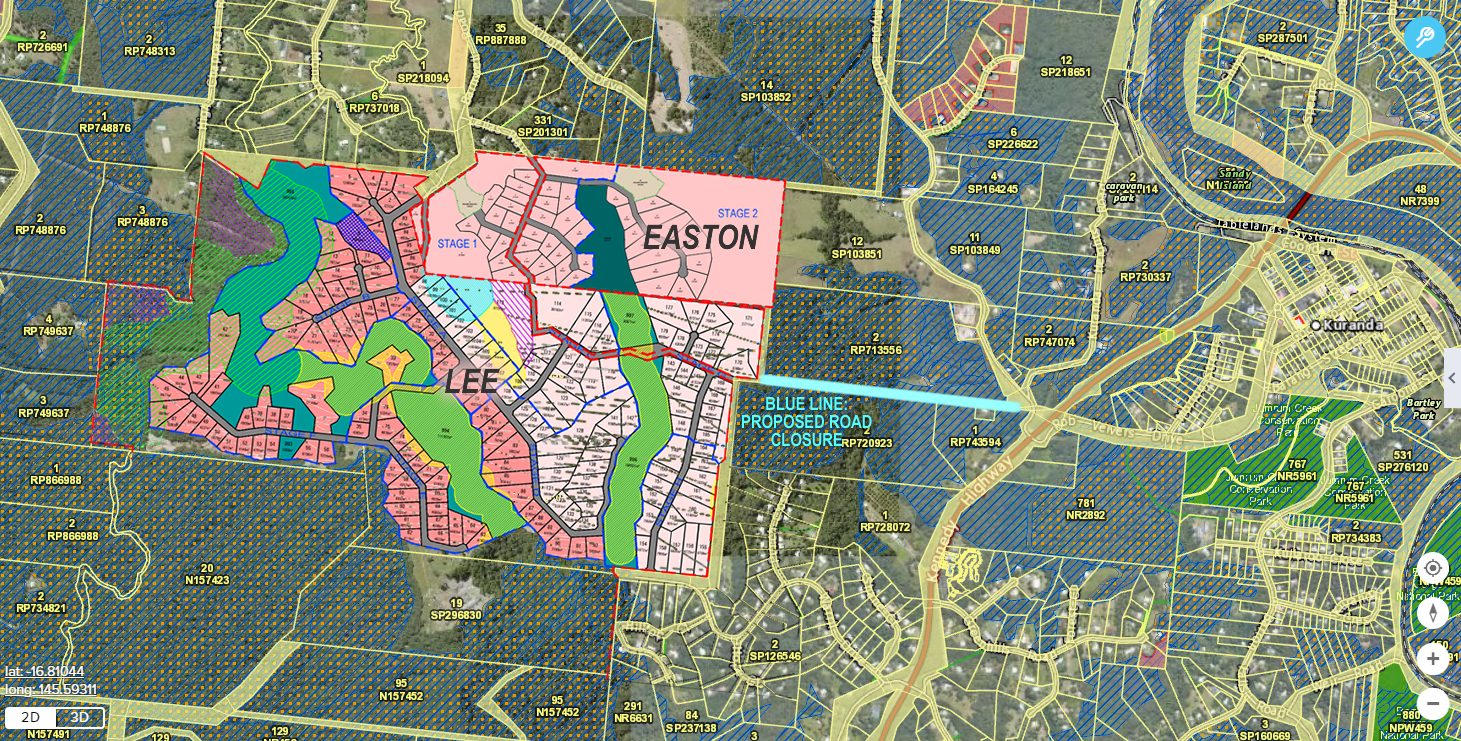Please read the background information below and fill in the questionnaire. When you click the SUBMIT button your digital submission will be sent to the following agencies:
- Mareeba Shire Councillors
- Craig Crawford MP, Member for Barron River
- Warren Entsch MP, Member for Leichhardt
- Cameron Dick MP, Minister for Local Government and Planning
- Leeanne Enoch MP, Minister for Environment and the Great Barrier Reef, Minister for Science and Minister for the Arts
- Andrew Powell MP, Shadow Minister for State Development, Manufacturing, Infrastructure and Planning
- David Crisafulli MP, Shadow Minister for Environment, Science and the Great Barrier Reef; Shadow Minister for Tourism
BACKGROUND INFORMATION
This questionnaire seeks to know the opinions of the Kuranda/Koah/Speewah communities regarding the following development decisions currently awaiting approval.
All questions relate to the old ‘Barnwell’ property currently being developed by Ken Lee, KUR-World Reever & Ocean and the local Easton family. Both PLAN A and PLAN B below will ask MSC for a ‘Material Change of Use’ from rural zone to urban zone. PLAN A introduces an additional 4,400 people to Myola, doubling the current Kuranda/Koah/Speewah population. PLAN B will bring 239 residential lots and will eventually create an additional 2,300 more daily vehicle movements on Warril Drive.
PROPONENT PLAN A
The owner of the land now has until 30 Jan 2019 to submit (Coordinator-General stated a new project declaration lapse date of 30 January 2019) :
- Environmental Impact Statement (EIS) KUR-World Integrated Resort plus 373 residential lots
*TOTAL 373 RESIDENTIAL LOTS
PROPONENT PLAN B
Mareeba Shire Council is currently processing two (2) large subdivision applications in the Myola Valley:
- 18 JAN 2018 RAL/18/0002, ROL – Subdivision (12 into 191 Lots in 8 stages), Reever and Ocean Pty Ltd C/- Cardno
- 18 JAN 2018 RAL/18/0001 ROL – Subdivision (1 into 48 Lots in 2 stages), Andrew Easton, Adrienne Easton & Barbara Martin C/- Cardno
*TOTAL 239 RESIDENTIAL LOTS

